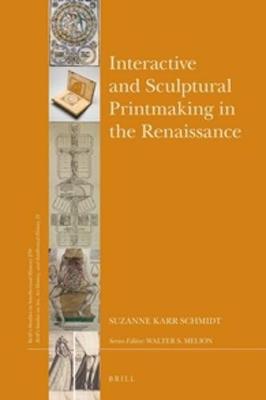Brill's Studies in Intellectual History / Brill's Studies on Art, Art History, and Intellectual History
1 total work
270/21
Interactive and Sculptural Printmaking in the Renaissance
by Suzanne Karr Schmidt
Published 20 October 2017
Suzanne Karr Schmidt's Interactive and Sculptural Printmaking in the Renaissance tells the story of a hands-on genre of prints: how innovative paper engineering redefined the relationship of early modern viewers to art, humanism, and science.
Interactive and sculptural prints pervaded the European reading market of the sixteenth and seventeenth centuries. Single sheets and book illustrations featured movable flaps and dials, and functioned as kits to build three-dimensional scientific instruments. These hybrid constructions—part text, part image, and part sculpture—engaged readers; so did the polemical, satirical, and, occasionally, erotic content. By manipulating dials and flaps, or building and using the instruments, viewers learned to think through images as well as words, interacting visually with desires, social critique, and knowledge itself.
Interactive and sculptural prints pervaded the European reading market of the sixteenth and seventeenth centuries. Single sheets and book illustrations featured movable flaps and dials, and functioned as kits to build three-dimensional scientific instruments. These hybrid constructions—part text, part image, and part sculpture—engaged readers; so did the polemical, satirical, and, occasionally, erotic content. By manipulating dials and flaps, or building and using the instruments, viewers learned to think through images as well as words, interacting visually with desires, social critique, and knowledge itself.
